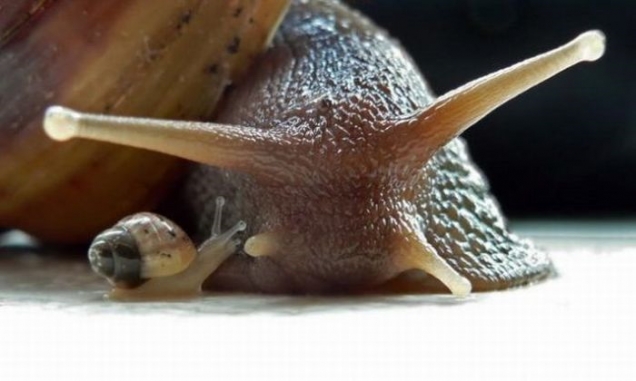A transplant of memories between snails!

Biologists from the University of California in Los Angeles have transferred the memory from one marine snail to another. An artificial memory is the result of an injection of RNA.
I think that in the not too distant future, we will have the potential to use RNA to deal with the effects of Alzheimer's disease or post-traumatic stress syndrome," says Prof. David Glanzman.
During the experiments, scientists slightly razed the leg of Aplysia snails with the current. Snails were ravaged 5 times in 20-minute intervals. The procedure was repeated after 24 hours.
Injury increases the stowage reflex. As Americans later taped animals, these electrocuted animals showed a defensive withdrawal that lasted an average of 50 seconds. Uninfected snails from the control group hid only for about 1 s. The observed phenomenon is called sensitization.
The day after the second series of injuries, the dormitories extracted RNA from the nervous system of the snails. The RNA of the snails was also collected from the control group. Later, 7 other individuals were injected with RNA of the sensitized group (they had not been electrocuted before). RNA of the second group was injected into another group of 7 non-irritated snails.
It turned out that the snails that got the RNA of the electric snails behaved as if they were themselves ragged because they were hiding for about 40 seconds on average. No prolonged withdrawal was observed in the control group.
In the next stage of the study, the authors of the publication from the eneuro periodical added RNA to Petri dishes with neurons extracted from non-electric snails. Part of the RNA was derived from electrocuted individuals and part from non-irritated ones. In some of the glasses there were sensory neurons, in others there were motor neurons, which were responsible for the reflex of hiding.
Scientists explain that when a cochlea is electrocuted in the tail, sensory neurons become more excitable. Interestingly, while the addition of electric snails to the RNA culture caused an increase in excitability of sensory neurons, nothing like that was observed in the case of motor neurons. As expected, the addition of RNA to non-circuit snails did not increase the excitability of sensory neurons.
Neuroscientists have long believed that memories are stored in synapses, but Glanzman is convinced that they are stored in the nuclei of neuroscience. If the memories were stored in synapses, our experiment would not have been possible.
Glanzman believes that in the future it will be possible to use RNA to revitalise and renew memories in the early stages of alzheimer's life.
Since there are many types of RNA, Glanzman wants to see which could be used to transfer memories.
Quality post.
I had started to read about this development and work got in the way!
Thank you for allowing me to finish reading about this brilliant breakthrough!
Look forward to reading more from you shortly.....
Peace
@shenobie